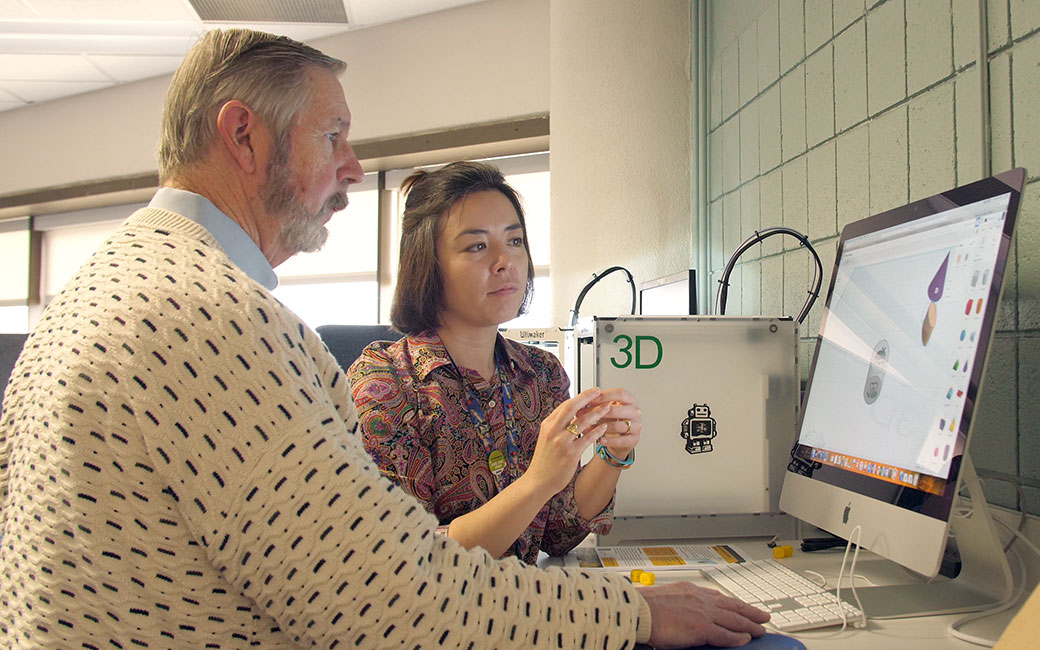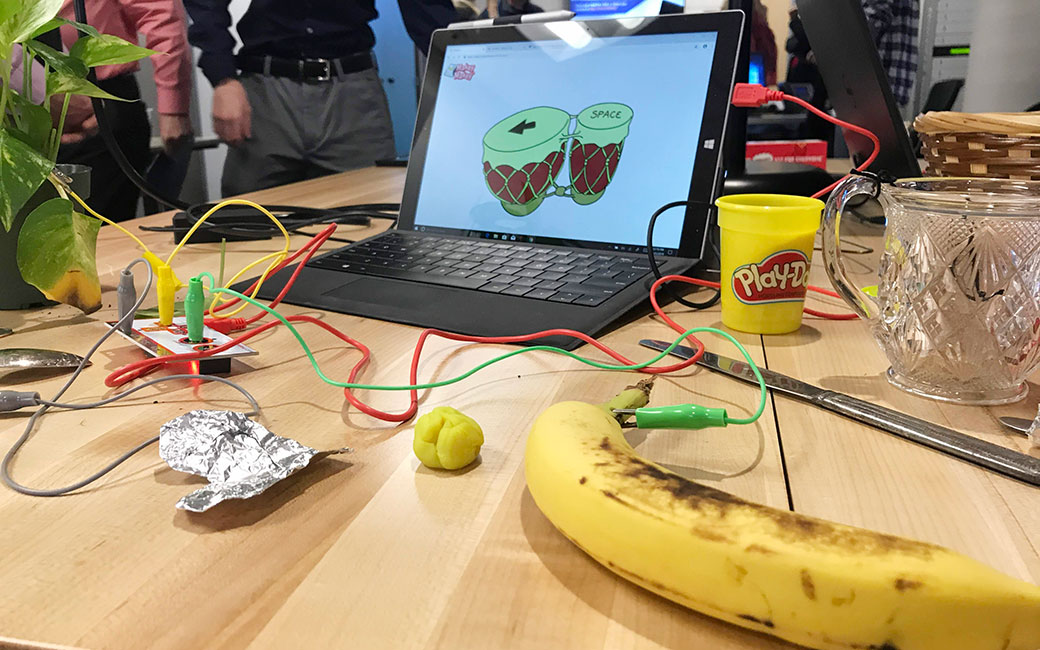The Sandbox: Using design thinking to promote 21st century learning
College of Education makerspace the Sandbox celebrates grand opening
By Rebecca Kirkman on March 26, 2019

By touching a banana or squeezing the leaf of a potted plant, staff and faculty attending the grand opening of the Towson University College of Education makerspace the Sandbox on March 25 were able to close an electrical circuit and hear the drum beat of bongos visualized on a laptop screen.
The “banana bongos” were just one interactive demonstration of the makerspace’s potential for engaging students and teachers in disciplines ranging from beginning robotics and programming to science and electrical currents or mathematics and computer-aided design.
Previously called the Educational Technology Center, the makerspace has been open to students since the start of the fall 2018 term. Located in Hawkins Hall room 210, the grand opening Monday celebrated its renaming to the Sandbox.
“The Sandbox’s unique environment provides opportunities for both students and faculty to explore the role of design thinking and making in today’s classrooms,” says College of Education Associate Dean Laila Richman. “In the future, College of Education faculty members will expand the collaborative aspects of the Sandbox by making practical, classroom-ready lesson plans and resources that can be shared both across the campus and with external school partners throughout Maryland.”

The “banana bongos” setup is made possible via Scratch, a programming language targeted at children, and Makey Makey, a USB circuit board invention kit. Other tools in the Sandbox include Dash & Dot and Cue programmable robots, two Ultimaker 3-D printers, a ClearTouch interactive touch-screen board and iPads. It also houses low tech tools—a sewing machine, paper cutter, button maker and paper binding machine, for instance.
“Kids can learn to code in ways that are fun and really easy to understand. You just drag and drop,” says Suzanne Obenshain, a lecturer in educational technology and literacy, as she demonstrates the banana bongos. “You can make your own games. Kids love it and society needs it.”
Planning for the makerspace began in the summer of 2017 with guidance from a ten-person advisory board consisting of leaders in the educational technology, making and design thinking fields.
“ The Sandbox helps our faculty prepare future teachers by giving students firsthand experience with using a wide range of technological tools in their coursework. ”
“Our faculty spent many months exploring and analyzing the kinds of tools that are already being used and that will soon be used in K-12 classrooms. They discovered that educators are using a wide range of technological tools to teach everything from art history to calculus,” says Richman. “By bringing those same tools onto campus, the Sandbox helps our faculty prepare future teachers by giving students firsthand experience with using them in their coursework.”
The space itself was designed to encourage collaboration. Flexible seating options can be reconfigured easily for small or larger group learning and discussion.
“Design thinking extends beyond physically making,” says Jamie Silverman, a lecturer in secondary and middle school education. A member of the Sandbox planning committee, Silverman acts as a professional development school liaison with Eastern Technical High School in Essex, which has a very active makerspace. “Our students can come together here to collaborate and learn from one another,” adds Silverman.